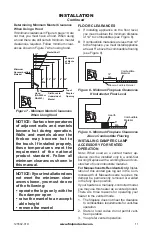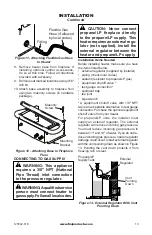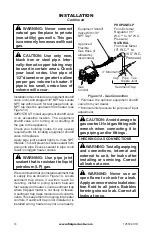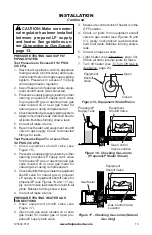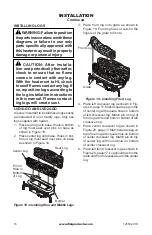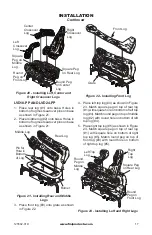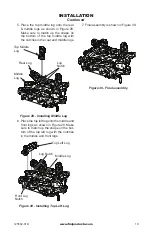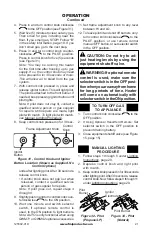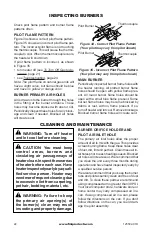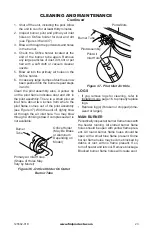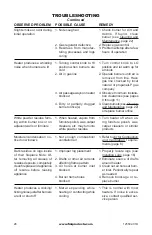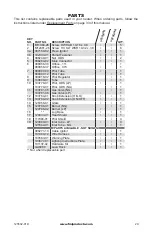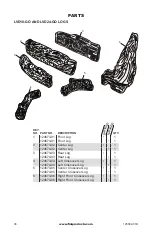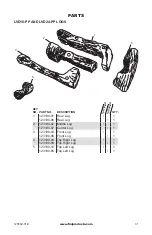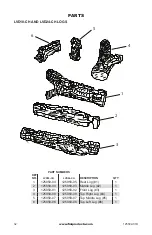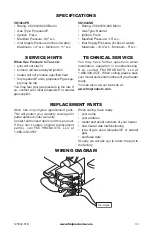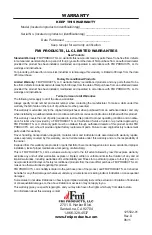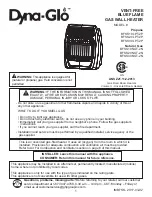
www.fmiproducts.com
125502-01D
23
Burner Tube
Pilot Assembly
Pilot Air
Inlet Hole
Ports/Slots
Burner
Tube
Orifice Holder
(May Be Brass
or Aluminum
Depending on
Model)
Primary Air Inlet Holes
(Shape of Holes May
Vary by Model)
Figure 36 - Orifice Holder On Outlet
Burner Tube
Figure 37 - Pilot Inlet Air Hole
1. Shut off the unit, including the pilot. Allow
the unit to cool for at least thirty minutes.
2. Inspect burner, pilot and primary air inlet
holes on Orifice holder for dust and dirt
(see Figures 36 and 37).
3. Blow air through the ports/slots and holes
in the burner.
4. Check the Orifice holder located at the
end of the burner tube again. Remove
any large particles of dust, dirt, lint or pet
hair with a soft cloth or vacuum cleaner
nozzle.
5. Blow air into the primary air holes on the
Orifice holder.
6. In case any large clumps of dust have now
been pushed into the burner repeat steps
3 and 4.
Clean the pilot assembly also. A yellow tip
on the pilot flame indicates dust and dirt in
the pilot assembly. There is a small pilot air
inlet hole about two inches from where the
pilot flame comes out of the pilot assembly
(see Figure 37). With the unit off, lightly blow
air through the air inlet hole. You may blow
through a drinking straw if compressed air is
not available.
CLEANING AND MAINTENANCE
Continued
LOGS
• If you remove logs for cleaning, refer to
Installing Logs,
page 16, to properly replace
logs.
• Replace log(s) if broken or chipped (dime-
sized or larger).
MAIN BURNER
Periodically inspect all burner flame holes with
the heater running. All slotted burner flame
holes should be open with yellow flame pres
-
ent. All round burner flame holes should be
open with a small blue flame present. Some
burner flame holes may become blocked by
debris or rust, with no flame present. If so,
turn off heater and let cool. Remove blockage.
Blocked burner flame holes will create soot.



